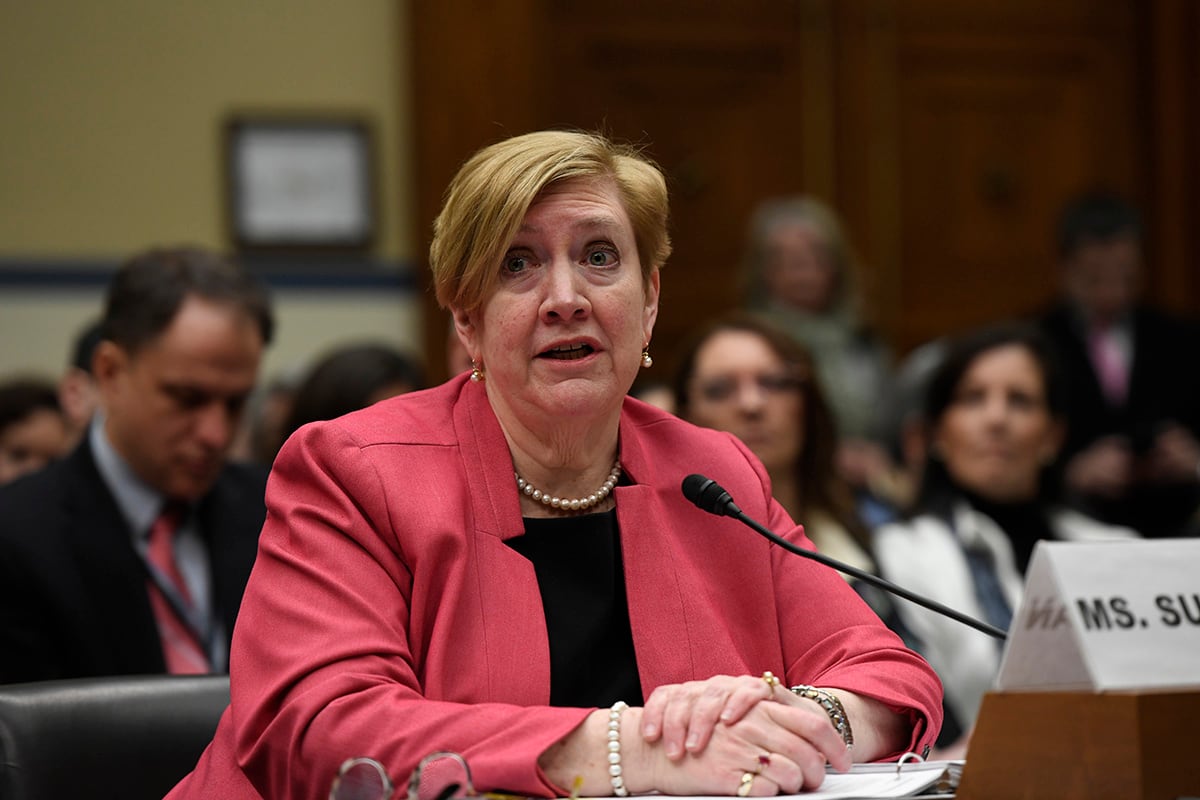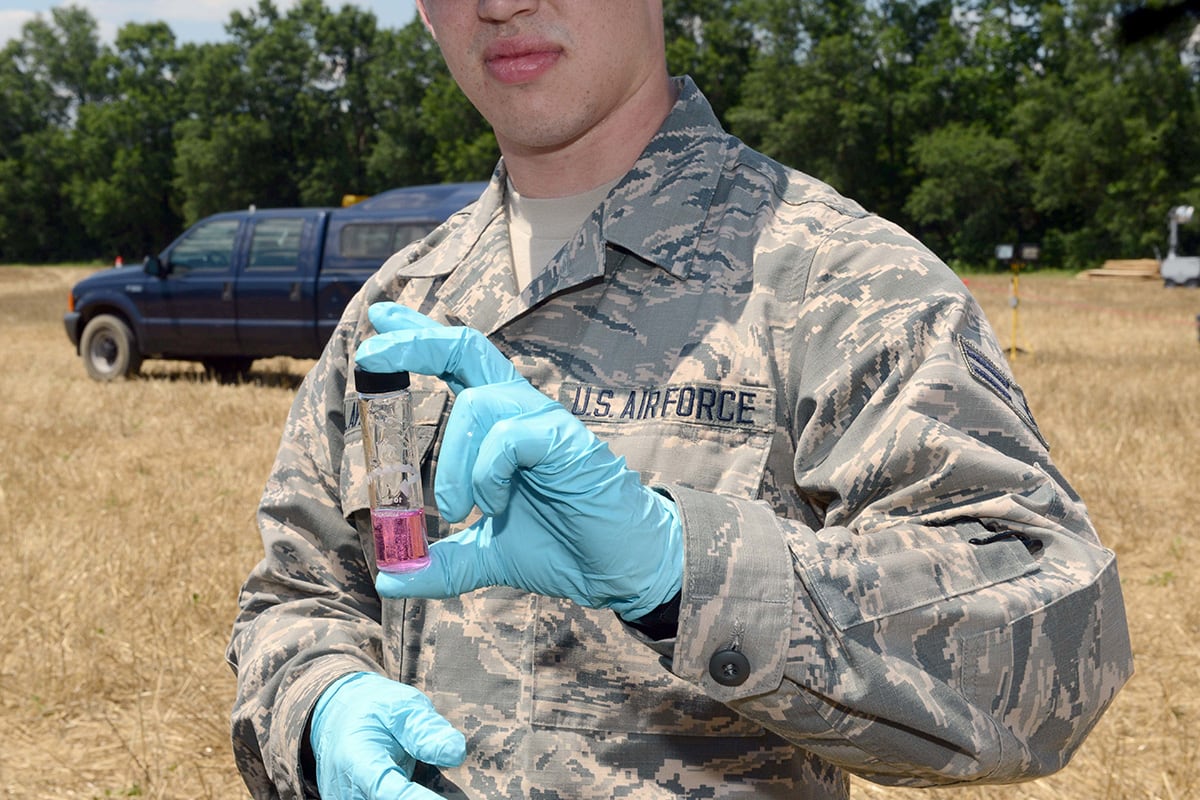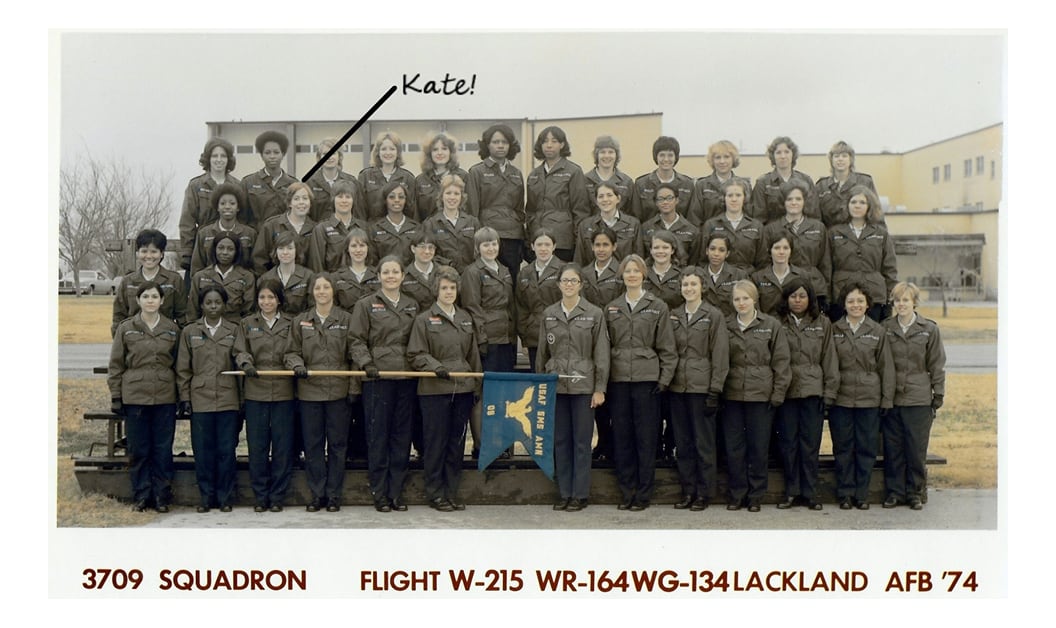The Pentagon is facing global bill of at least $2 billion — and likely more ― to clean up groundwater and drinking wells contaminated by years of seepage from the military’s firefighting foams. It has already paid several hundred million dollars to install filters and provide bottled water to affected areas.
Behind the scenes, however, the Pentagon has worked to convince Congress and the administration to support new contamination standards that could save the Pentagon billions — potentially at the expense of public health.
Right now, more than 126 military installations or sites and their surrounding communities have either wells or groundwater sources that contain dangerous levels of perfluorooctane sulfonate (PFOS) and perfluorooctanoic acid (PFOA), chemical compounds tied to birth defects and cancers. The chemical compounds were part of the military’s firefighting foam for decades and continued to be used as recently as last year.
RELATED

In 2016, the Environmental Protection Agency issued a health advisory that recommended that water sources contain no more than 70 parts per trillion of the compounds. However, the EPA’s advisory is not law, so neither the Pentagon nor any other municipality is required to meet the 70 ppt standard. Since 2016, however, DoD has voluntarily been providing bottled water and filters to areas where exposure exceeds the 70 ppt limit.
But the Pentagon also would like to see a national standard set — at levels higher than 70 ppt, according to Sen. Tom Carper, D-Del. Over the last year DoD has worked along with NASA and the Small Business Administration to push "for the adoption of a much higher 400 ppt clean-up standard and 1200 ppt emergency level,” Carper said, a standard that would allow much higher exposure in public water sources. The Pentagon’s effort was first reported by The New York Times.
“Such levels would, among other consequences, subject fewer sites that were contaminated through the military’s use of PFOA/PFOS from having to be remediated in the first place,” Carper said.
Pentagon spokeswoman Heather Babb said the department isn’t trying to skirt its cleanup responsibility.
“DOD is not seeking a different or weaker cleanup standard but wants the standard risk-based cleanup approach that is based on science and applies to everyone,” Babb said.
That did not sit well with families affected by contaminated bases. Veteran Arnie Leriche, who spent his post-military career as an environmental engineer at the EPA and lives next to the contaminated and now-closed Wurthsmith Air Force Base, said the cost just to clean up Wurthsmith’s impact on their communities water supply is $116 million.
“And that’s just one base, and just the 10-year [estimate]," Leriche said.
RELATED

PFOA/PFOS are known as “forever chemicals” because of their long life. They can remain at levels higher than 70 ppt in water sources long after there’s no new firefighting foam seeping into the ground. At George Air Force Base in California, for example, where female airmen were warned “don’t get pregnant” while serving there because of a high rate of miscarriages, DoD sunk 22 monitoring wells in the last year to test water sources. Fourteen came back with PFOA or PFOA readings that ranged between 87 and 5,396 parts per trillion above the 70 ppt limit.
George AFB has been closed since 1992.
At still-active airfields, the long-time use of the foam has left local water sources contaminated at levels far beyond 70 ppt. For example, at Peterson Air Force Base, in some water sources the PFAS/PFOA count is as high as 7,910 ppt.
Families and communities across the U.S. now question if their illnesses were caused by the foam. Former Army reservist Spc. Mark Favors’ family, for example, has lived near Colorado’s Peterson Air Force Base since the 1930s. Sixteen members of his family have been diagnosed with cancer; 10 have died. The family came to Capitol Hill last week for a hearing on the issue.
“We’re trying to get justice,” Favors said before last week’s hearing.
Now it appears that the cost of cleaning up DoD’s vast land holdings, and a myriad of lawsuits that states and municipalities are now filling against the Pentagon, may have convinced DoD that the 70 ppt level is too costly to meet.
The Pentagon’s $2 billion estimate is just its best guess right now. DoD still has years to go, and at some sites, potentially decades to go in the official environmental cleanup process under the Comprehensive Environmental Response, Compensation, and Liability (CERCLA) Act, Maureen Sullivan, deputy assistant secretary of defense for environment, told Military Times in an interview last year.
Until then, DoD won’t know the true extent of the water contamination, or the price tag to clean it up.
The Pentagon does know it can’t afford to clean everything up right now. The foam cleanup adds $2 billion to the more than $27 billion in environmental cleanup the Pentagon is responsible for, not just for the foams, but for other cancer-tied chemicals, such as trichloroethylene, or TCE, a solvent used to clean metals. So it will have to rack-and-stack the foam cleanup based on risk to the populace compared to its other environmental responsibilities, Sullivan previously told Military Times.
“The Department does not have sufficient resources to simultaneously fund activities at all sites where cleanup is not complete, therefore DoD uses a nationwide, risk-based approach to prioritize its sites for cleanup,” the Pentagon told Congress in its June 2018 report on its efforts to move away from the PFOS/PFOA based firefighting foams.
In that correspondence, first made public by the Government Accountability Office, the Pentagon suggested that it could clean up its locations to a lesser extent and leave up to 380 ppt of the chemical compounds in the water. That revised figure was based on the EPA’s CERCLA risk assessment process, DoD said in the congressional report.

But DoD is also aware of the bad optics if it cleans its locations to just 380 ppt if the the official EPA recommendation remains at the stricter 70 ppt level. In June 2018 DoD pushed the EPA to set a nationwide standard.
While DoD did not directly ask that the standard be relaxed in its 2018 report, it strongly suggested that having the EPA’s 70 ppt standard out there would be problematic.
“If the PFOS or PFOA levels in groundwater exceed 70 ppt but are below 380 ppt, responsible parties will face the challenge of explaining to communities the difference between the 70 ppt guidance for drinking water and the approximately 380 ppt risk-based groundwater cleanup level,” the Pentagon wrote. The lack of a nationwide standard requirement “create[s] tremendous risk, communication challenges for all concerned parties — states, EPA, DoD, and community leaders — when explaining how the groundwater cleanup levels are protective of human health,” DoD said.
The Times additionally reported that during negotiations last year at the EPA that could lead to a federal standard, DoD pushed hard to get the levels loosened.
The Environmental Working Group, which is working with scores of families who lived in the contaminated communities, told reporters Thursday the move by the Pentagon to get the standards increased to 380 ppt was likely driven by the lawsuits and unknown future costs.
“It highlights the impact of not having an official [maximum contaminant level] and regulatory standard that the DoD must follow,” said David Andrews, a senior economist at the Environmental Working Group. “They feel that they have some leeway to argue their case, and I think that really highlights the regulatory failing at the federal level.”
Tara Copp is a Pentagon correspondent for the Associated Press. She was previously Pentagon bureau chief for Sightline Media Group.





